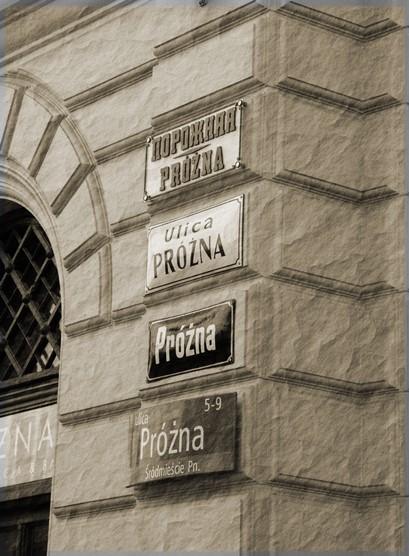
-
 Thank you for your method for mincing jalapeno peppers. I use it!
Przez:domowypatchwork 29Dec2020
Thank you for your method for mincing jalapeno peppers. I use it!
Przez:domowypatchwork 29Dec2020 -
 Thank you!
Przez:domowypatchwork 29Dec2020
Thank you!
Przez:domowypatchwork 29Dec2020 -
 Inka is our chickory coffee. I think that you can use any kind of coffee ...
Przez:domowypatchwork 29Dec2020
Inka is our chickory coffee. I think that you can use any kind of coffee ...
Przez:domowypatchwork 29Dec2020 -
 What a wonderful idea! I will make this with blackberry preserves, without the ...
Przez:Andrea 23Dec2020
What a wonderful idea! I will make this with blackberry preserves, without the ...
Przez:Andrea 23Dec2020 -
 This fish soup looks delicious!
I love soup.
Przez:Andrea 22Dec2020
This fish soup looks delicious!
I love soup.
Przez:Andrea 22Dec2020
Próżna Street - where old meets new
The picturesque and amazing history of Polish Jewry is branded with the Holocaust. In a few districts of Warsaw there are places which memorialise the terrible martial history of this nation: monuments, traces of Ghetto walls, Umschlagplatz, and the recently opened Museum of the History of Polish Jews.
The Jewry is indissolubly connected with the history of our capital city. The first documented information about them living in Warsaw comes from the beginning of the XV century and testifies to community life. They were mostly involved in trading, money lending and medicine. The place of the future Jewish district in Warsaw was between Wały Lubomirskiego (which runs through today's Polna Street, Towarowa Street, Okopowa Street, Gdański Train Station and Cytadela) and Wały Zygmuntowskie. It was here in 1686 that Bellotti Palace was built - a royal building - named "Murano" after the Venetian island Murano. Bellotti came from this island. The contemporary name of the Warsaw district Muranów derives from this island. Before the Second World War, Muranów was 90% occupied by Polish Jews, and it is here that the Nazis created the Jewish Ghetto.
Grzybowski Square is tangible proof of Jewish presence in Warsaw, with its surrounding streets, Próżna and Twarda. Here we can see the only pre-war Synagogue in Warsaw, built on the initiative of Zalman and Rywka Nożyk.
The Grzybowski Square neighbourhood was famous for its many small hardware shops. Now a few shops still sustain the Jewish tradition of trade.
Próżna Street is now the only street in the former place of the Ghetto which still has pre-war buildings on either side of the street. In fact, four townhouses still remain, with nos. 7, 9, 12, 14. This street is caught in a time warp. I have the impression that in a moment from one of the ruined iron gates an old Jew wearing a black coat will come out, followed by a cheerful, screaming group of children.
Recently, a section of the townhouses got a new façade. Behind two of them a modern office building was built. The biggest challenge for the builder was how to combine the old buildings with the new ones. In one of the townhouses the apartment of its owner, Zalman Nożyk, the sponsor of the Warsaw Synagogue, was recreated. I haven't seen it but for sure there is a cheerful Restaurant in the area called Strefa. It all looks beautiful, but I think that because of the rebuilding the old atmosphere of this place has been lost. I hope that any future rebuilding of the other townhouses will leave more of the original building, so that while walking past you could imagine the picturesque but difficult life of the Jewish Community. I would like to feel for a while the atmosphere of Jewish Warsaw. I would like to go through the streets and the corners, look at townhouses and backyards and listen intently to the multilingual mingling of voices. Jewish Warsaw was a place of huge social contrasts, and at the same time interesting culture and authentic cuisine, which I have never tasted. Can we recover all this? The history of XX century changed a lot.
Information comes from „Między ulicą Żydowską a Umschlagplatzem" Jacek Leociak http://zmh.um.warszawa.pl, and www.wikipedia.pl













